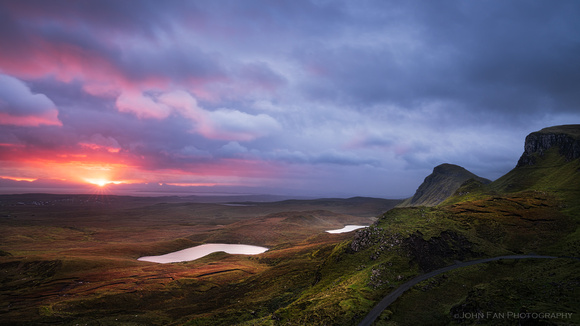I have been traveling across North America to give photography lectures in recent years. One of the topics I went over many times is artistic vision in photography. During this holiday season, I decided to collect my thoughts and write a series of articles about the subject.
Human brain is divided into left and right hemispheres. Left brain thinking is more analytical, while the right brain is more intuitive. In another word, left brain is more technical and right brain is more artistic. Does photography rely on left brain or right brain? This art vs technology debate is an age old discussion that has never come to an end.
Well, photography is at first a technology. A lens focuses the light reflected or emitted from objects onto the photo-sensitive material, film or image sensor, inside a camera during a timed exposure. The light is then recorded chemically or electronically and processed into an image. Photography is not possible without technology. A properly exposed image is intimately tied to a series of correctly determined parameters: focus, aperture, shutter speed, ISO, etc. Modern technology has made life really easy for photographers. Press a button, you get instant gratification. That has in a way caused an explosive popularity of photography. Photography is no longer a skill that can only be mastered by fortunate few. Everyone with a camera can satisfy their inner desire to be a master.
However, the advancement of technology also became one of the obstacles for many beginners to elevate to a higher level as it has led to a commonly held perception that there is a transfer of creative responsibility from photographer to camera equipment. When a non-photographer looks at an image, the first impression that comes to the mind is often like this: “Nice picture. He must have a nice camera”. As we advances down our photography journey, we no longer make that kind of obvious remark. But the old philosophy is hard to shake off. Instead of saying “a nice camera”, we now think of high quality lens, sophisticated post processing technique, etc.
What makes an image successful is not just camera parameters, there is another aspect of photography that is difficult to measure scientifically: composition, contrast, color, light, mood, etc. It is the artistic aspect of a photograph.
What is art? Art is “the use of skill and imagination in the creation of aesthetic objects, environments, or experiences that can be shared with others”, according to Britannica Online. We spend so much time and effort to study the technical aspect of photography. While it is essential to a successful image, we often lose sight of creativity and imagination. We often see a technically perfect picture of a picture-perfect scene that lacks soul and feels documentary or descriptive. “A great photograph is a full expression of what one feels about what is being photographed in the deepest sense, and is, a true expression of what one feels about life in its entirety” – Ansel Adams.
Photography is a combination of art and technique. As Arnold Newman best described it: “visual idea combined with technology combined with personal interpretation equals photography. Each must hold its own; if it doesn’t the thing collapses”. To move beyond simple descriptive record of reality, one needs to evoke emotional responses in the viewer mind.
So, which half of the brain is more important? The key for a photographer to elevate his/her work to a higher level is to find the right balance between technical knowhow and artistic creativity. A photograph without technique is a snap shot, a photograph without idea is a record shot. A good photographer must use the whole brain.

Wake up Call